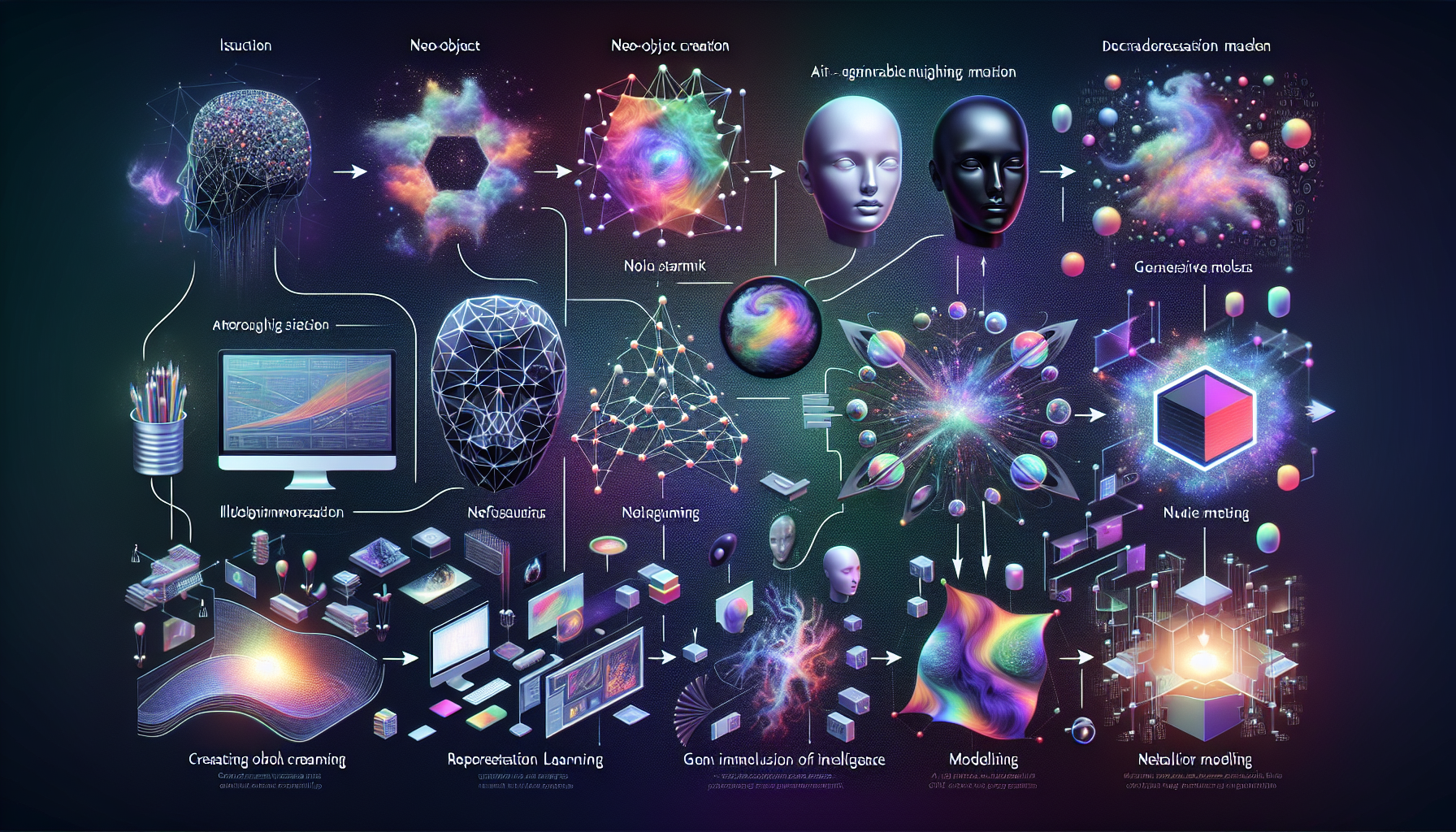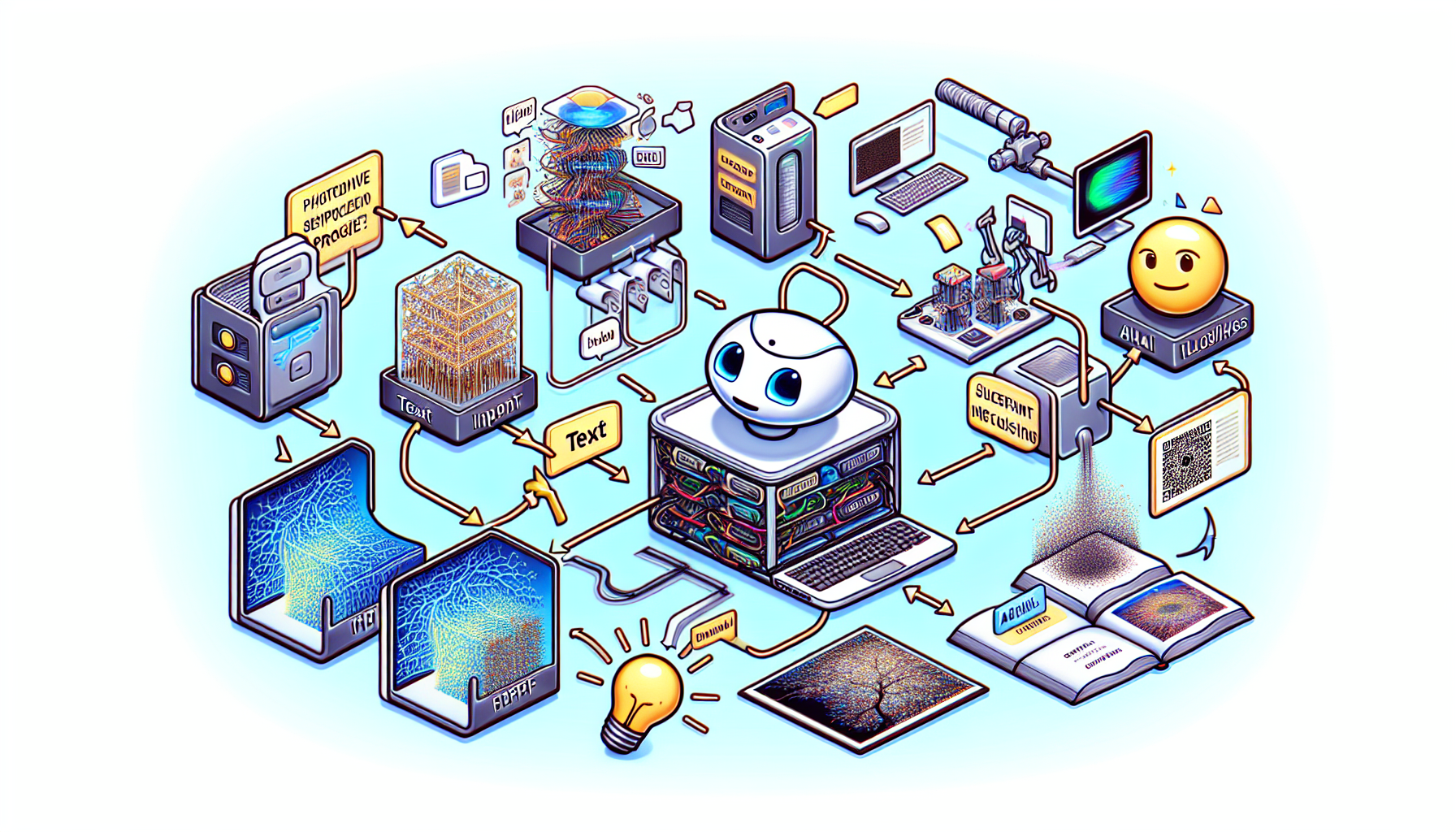https://www.youtube.com/watch?v=ShLittT7RTE
The simulation of human intelligence by AI?
The ability to simulate human intelligence with machines has always been a singular fascination, both for scientists and the general public. If the idea of a machine capable of thinking, reasoning and understanding like a human may still seem like science fiction, advances in artificial intelligence (AI) prove to us that we are closer than ever to this reality . Let’s dissect together the facets of this impressive simulation of human intelligence.
What is human intelligence simulation?
The simulation of human intelligence by machines, often referred to as strong AI or general AI, refers to the ability of a computer program to perform tasks that, if carried out by a human being, would require intelligence. This includes understanding language, recognizing patterns and images, rational decision-making, and even creativity.
Key AI technologies
To simulate human intelligence, several technologies and approaches are implemented:
– Machine learning : Algorithms that allow machines to improve through experience and data.
– Deep learning : A subset of machine learning that uses artificial neural networks to mimic the functioning of the human brain.
– Natural language processing (TLP) : Technology that allows machines to understand and generate human language.
These technologies are often supported by huge data sets and considerable computing power, allowing them to recognize complex patterns and “reason” in ways similar to the human mind.
Eloquent examples of human intelligence simulations
Several projects and products from major technology companies illustrate how far we have come in simulating human intelligence:
– IBM with his system Watson, known for winning Jeopardy! against human competitors.
– Google DeepMind created AlphaGo, the program that beat the world champion of Go, a game renowned for its complexity.
– OpenAI has developped GPT-3, a language model capable of producing surprisingly coherent and contextually relevant texts.
Benefits and implications of simulating human intelligence
The simulation of human intelligence has many advantages that could transform our societies:
– Automation of complex tasks
– Decision support in critical areas such as medicine or finance
– More natural and intuitive interaction with technology
– Innovation and creativity augmented by AI in areas such as art and design
However, this progress comes with its share of ethical questions and challenges, including the security of AI systems, potential bias in machine learning and the impact on employment and society.
The future of human intelligence simulation
The long-term potential of simulating human intelligence arouses as much enthusiasm as it raises questions. We can expect major advances in areas as diverse as personal robotics, personalized medicine and even intelligent transport systems. Close cooperation with AI could lead us to rethink the way we work, our leisure activities and our interaction with the world around us.
The technological limits behind the veil of autonomy

The illusion of perfect AI autonomy
The idea of a fully autonomous machine or system, capable of operating without any human supervision, fascinates and fuels a multitude of projects. However, the technical reality turns out to be more complex. Systems currently marketed under the “autonomous” label require a multitude of conditions and safeguards to ensure their safe and efficient operation.
The undeniable dependence on human supervision
Although we often talk about autonomous vehicles or domestic robots capable of making decisions on their own, human monitoring is still far from obsolete. Brands like You’re here and their semi-autonomous vehicles are a perfect example: despite their prowess, constant attention from the driver is required due to the unexpected challenges that can present themselves on the road.
1. Continuous update and maintenance
2. Supervision for accident prevention
3. Manual intervention in the event of a failure or unforeseen circumstances
Limitations in machines’ visual perception, context understanding, and adaptation to unforeseen events highlight the imperative need for human oversight.
IBM, Google, and other leaders in the field of AI are constantly working to push the boundaries of these technologies, while facing these fundamental limitations.

Now that all that is out of the way: let’s see why, AI is in reality only an illusion of intelligence…
The Illusion of Understanding and Awareness in ChatGPT Interactions

Interacting with artificial intelligence systems like ChatGPT can often feel like we are communicating with an entity that understands and shares feelings or experiences similar to our own. This is all the more striking with advanced platforms, which generate responses of remarkable fluidity and consistency.
However, we must stop and discern the reality behind these exchanges: it is an illusion of understanding and consciousness, and not a true emotional or cognitive intelligence similar to that of human beings.
The illusion of understanding
Models like ChatGPT are trained on vast amounts of text data and can generate responses that seem relevant and informed. However, this relevance is the result of complex algorithms and not a real understanding of the world or the specific context of a conversation.
– Keyword recognition ability
– Assembly of coherent sentences using prediction models
– Lack of deep contextual understanding
The illusion of consciousness
When interacting with an AI-based chatbot, one might believe that it is conscious, due to the high level of personalization and adaptation of responses. However, consciousness involves a subjective experience of the world, an ability to experience autonomous feelings and thoughts, which is beyond the current capabilities of AI.
– Empathetic responses without real emotion
– Imitation of personalization without identity awareness
– Simulation of interests without real preferences or desires

Leave a Reply